Ten years in genome sequencing: Darren Heavens
Genome sequencing has advanced rapidly in the last ten years, and Darren Heavens has been at the heart of it! So, how’s it changed and where’s it going?
The world of biosciences has changed drastically in recent years - the last ten in particular - which have seen a boom in genome sequencing capacity and affordability. Dr Darren Heavens has been right at the heart of it, from next-gen to third-gen, working with and contributing to each and every innovation along the way.
In Earlham Institute’s tenth year, Dr Darren Heavens tells us of his evolving role in the Genomics Pipelines Group since the very start (when EI was known as TGAC), leading to him obtaining a PhD by publication in 2018.
He has worked with all of the latest advances in genome sequencing since he began in March 2009, all the while developing protocols and techniques that have contributed to some important breakthroughs in that time.
It was 8th March, 2009 when TGAC sent me to Darmstadt in Germany to learn how to construct libraries and sequence using the ABI SOLiD next generation sequencer. The rest, they say, is history.
Some ten years later much has changed in the world of DNA sequencing.

Instruments have come and gone, throughput and read length have increased but more importantly cost has reduced significantly making the technology accessible to even the smallest research groups.

During my time at EI I have worked with five different sequencing technologies - ABI SOLiD, Roche 454, Illumina, PacBio and Oxford Nanopore - and each has their own particular strengths and weaknesses.
I really liked the theory behind the SOLiD long mate pair protocol, or the ease at which a bacteria could be sequenced and assembled into a handful of contigs in less than 24 hours using the 454.
However, they have both been surpassed by some of the longer read technologies with PacBio reporting reads of over 100 kbp, and Oxford Nanopore over 2 Mbp, with both capable of producing single contig bacterial assemblies in less than 4 hours.
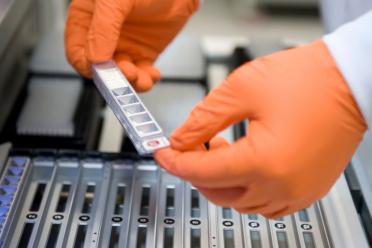
For all the impressive technology, both in sequencing and computing capacity, it is the people who have worked here who, in my opinion, have made the greatest impression on me. We are fortunate to have some very talented individuals, many of whom I have had the pleasure of working with.
In Tom Barker we have an Illumina expert second to none, in Naomi Irish we have a specialist who PacBio themselves recognise as one of the best in the business and in James Lipscombe we have an automation guru who has one of the most comprehensive understandings of process that I have ever come across.
If anyone had technical questions about any of these areas I would highly recommend that they contact them, I know I do.
Teamwork has been pivotal to delivering a number of high profile projects. In the 10 years that I have worked here we have established a number of novel pipelines to generate sequence information and developed new ways to assemble and analyse data.
Notable achievements include constructing libraries, sequencing and assembling >20 000 barley, >40 000 lolium and >100 000 wheat Bacterial Artificial Chromosomes (BACs).
These would not have been completed without the dedication of the multi-disciplined teams undertaking them. It is remarkable to think that James and Suzie Henderson processed the 100 000 wheat BACs in a little under a month.
Using this BAC by BAC approach the Human Genome Project would have been sequenced in under a year in a single Institute for less than £1 million pounds (by comparison, in reality it took over 25 years and more than one billion pounds using older sequencing methods).
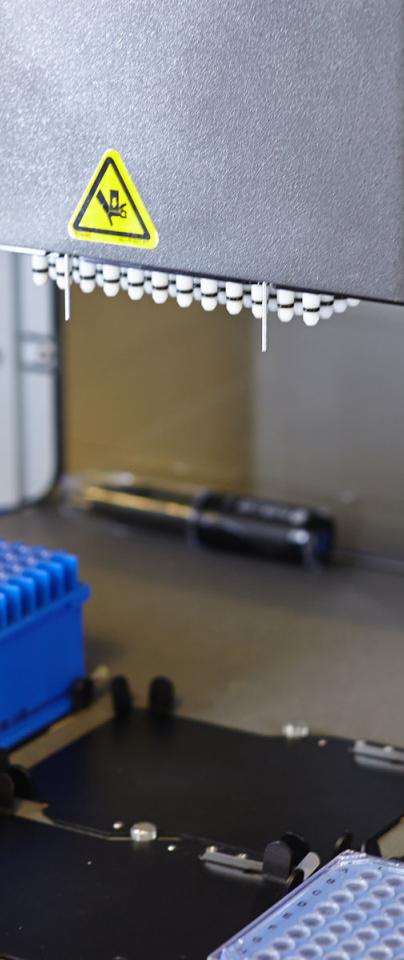

For all the impressive technology, both in sequencing and computing capacity, it is the people who have worked here who, in my opinion, have made the greatest impression on me. We are fortunate to have some very talented individuals, many of whom I have had the pleasure of working with.

In the same way technology advances and old instruments become obsolete, so do protocols. The BAC by BAC approach described above has now been surpassed by whole genome approaches that generate better contiguity for a fraction of the price.
This then presents an opportunity to develop something new and that is what I really enjoy. Having the autonomy to go away and apply some of your knowledge and intuition and finding out where it leads you can be great fun and immensely rewarding.
A good example is in using the library construction aspect of the BAC pipeline to develop a high throughput re-sequencing pipeline which was used to survey sequence a >10 000 salmonella samples and >20 000 other samples over the last couple of years.

EI is also getting a reputation for producing highly contiguous assemblies for de novo genome projects based on sequence data generated using protocols that I have developed.

We have released assemblies for multiple wheat lines and many other organisms and regularly receive enquiries from both academic and commercial sources about potential projects.
Many of these collaborators and clients are returning customers, suggesting that they are happy with their previous data sets.
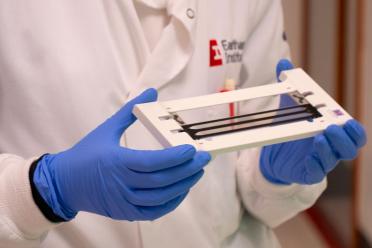
One area of science that I am particularly passionate about is teaching. Over the years I have hosted/mentored three year-in-industry students, one MA student, two Nuffield students, four undergraduate work experience students, and more than ten pre university students, and I currently sit on a PhD supervisory panel.
I was very lucky in that the first molecular biology lab that I ever worked in didn’t use kits so I had to learn everything from first principles. That knowledge has stood me in good stead when it comes to troubleshooting and solving particular problems and is something that I try to instill into the students.
It’s encouraging to see that all of them are still in science, some at University, some doing postgraduate courses and some forging careers in the field: so I am safe in the knowledge that I haven’t put them off!
One of the big advantages of working in an academic environment is the need to publish and make data and methods publically available. I consider it an honour that collaborators value my contribution sufficiently to warrant inclusion as a co-author and to date I have over 20 publications from my time at EI.
From a personal point of view this allowed to me to apply to undertake a PhD by publication through UEA, which I completed and graduated from last year. I am hoping that in doing this I am role model for other employees and can inspire them to follow a similar path. Already two more EI staff have applied to undertake their PhD this way and I am intrigued to see how they get on.
Going to conferences and presenting results is also important. Modern scientists need to network and with social media, global is the new local. There is so much help and advice out there and with much of science these days it can often be about who you know rather than what you know in order to succeed.

I consider it an honour that collaborators value my contribution sufficiently to warrant inclusion as a co-author and to date I have over 20 publications from my time at EI.

Don’t be scared of the instruments! If you were to have a tour round our lab you would see some very expensive equipment and what looks like some complicated protocols to run them. I know when I first started work I was a little bit in awe of all the machinery and felt that I would never master any of them.
It’s important to remember that the manufacturer wants you to feel relaxed and to find them user friendly. If not then you are less likely to use and/or recommend them.
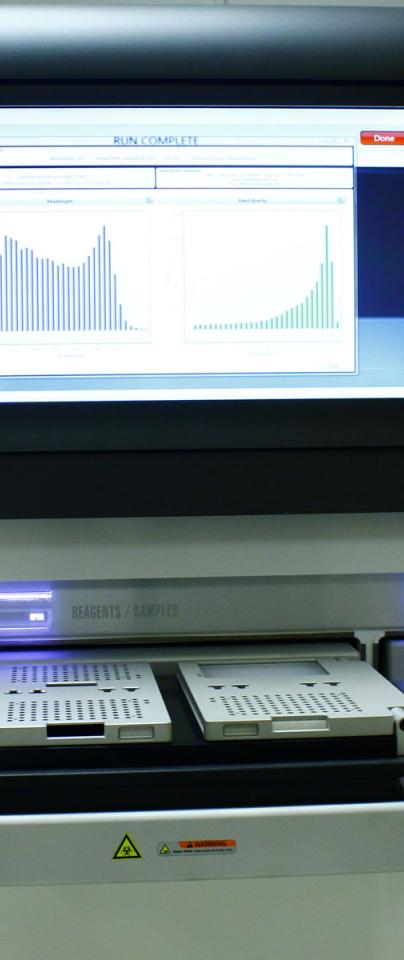

Don’t be scared of the instruments! If you were to have a tour round our lab you would see some very expensive equipment and what looks like some complicated protocols to run them.

It is important to remember that sequence technology is very dynamic. Illumina have the greatest market share due to their cost per base pair and accuracy. To maintain this position they are continually improving the technology.
They have introduced six different instruments and eight different read metrics since we got our first GAII in 2009. This can make defining an optimal strategy to sequence an unknown genome, with an unknown karyotype, difficult.
This will ensure the recently announced Darwin Tree of Life project will be more challenging than some might expect. However, when designing an experiment you can only do it with what technology is currently available. Equipment manufacturers often court you with new improvements but they very rarely deliver on time and to the specification they claim.
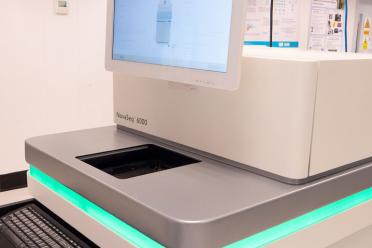
I am not sure about where we will be in ten years but I am pretty confident that in the next couple of years someone will report the sequencing of an entire chromosome in a single read and that is a sobering thought.
That will probably be a small bacterial genome, as labs are already achieving read lengths longer than the smallest genomes we know.
It will be a significant game changer and start to put more onus onto DNA extraction. For many that is the rate-limiting step for sequencing, as it can be difficult to extract really long DNA molecules.
I, personally, am looking forward to the challenge of metagenomic samples and trying to assemble individual genomes from complex mixes. This is something that the long read technologies should help with and there are so many untapped microbiomes to explore and that it is something that I am very excited about.

I am not sure about where we will be in ten years but I am pretty confident that in the next couple of years someone will report the sequencing of an entire chromosome in a single read and that is a sobering thought.
